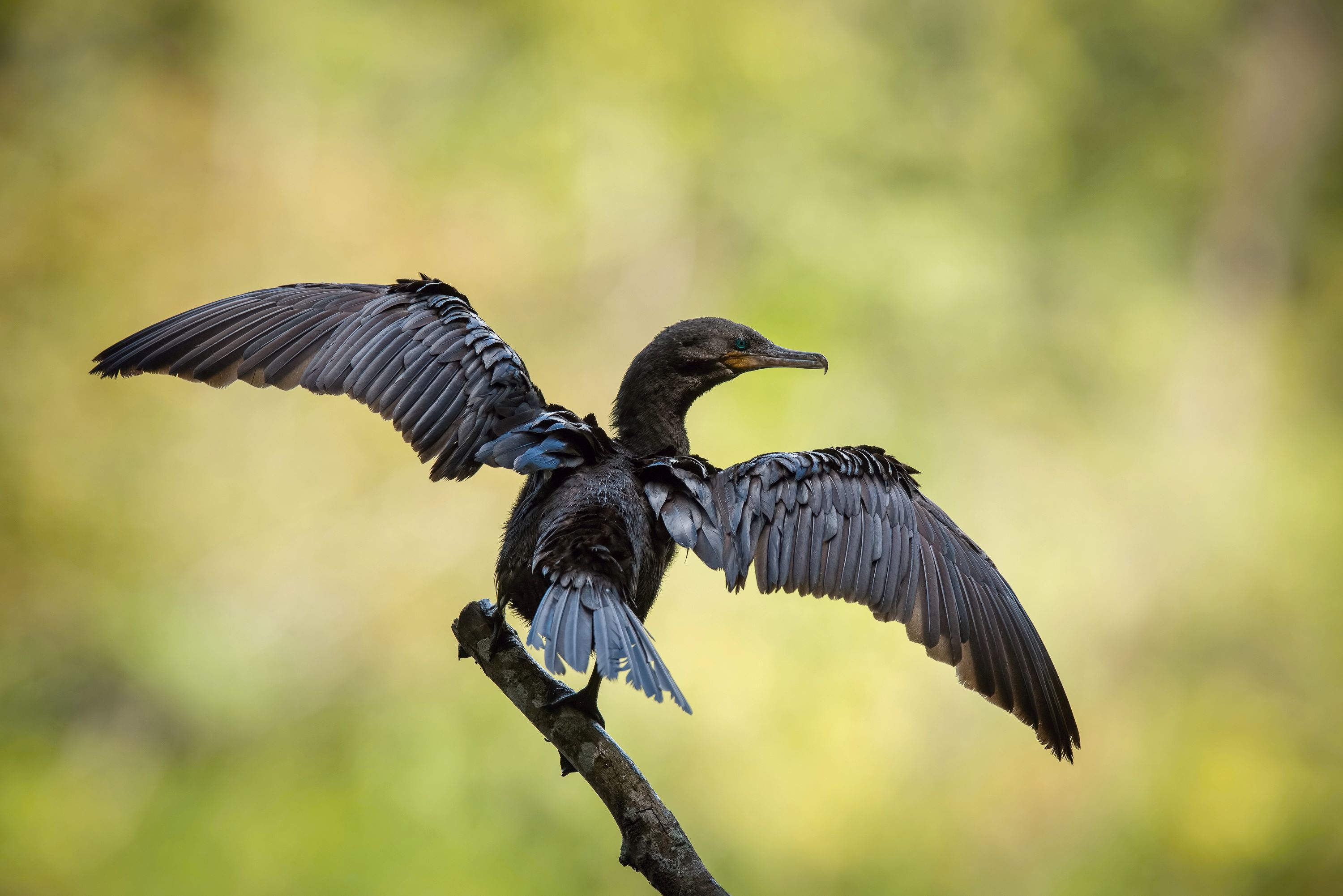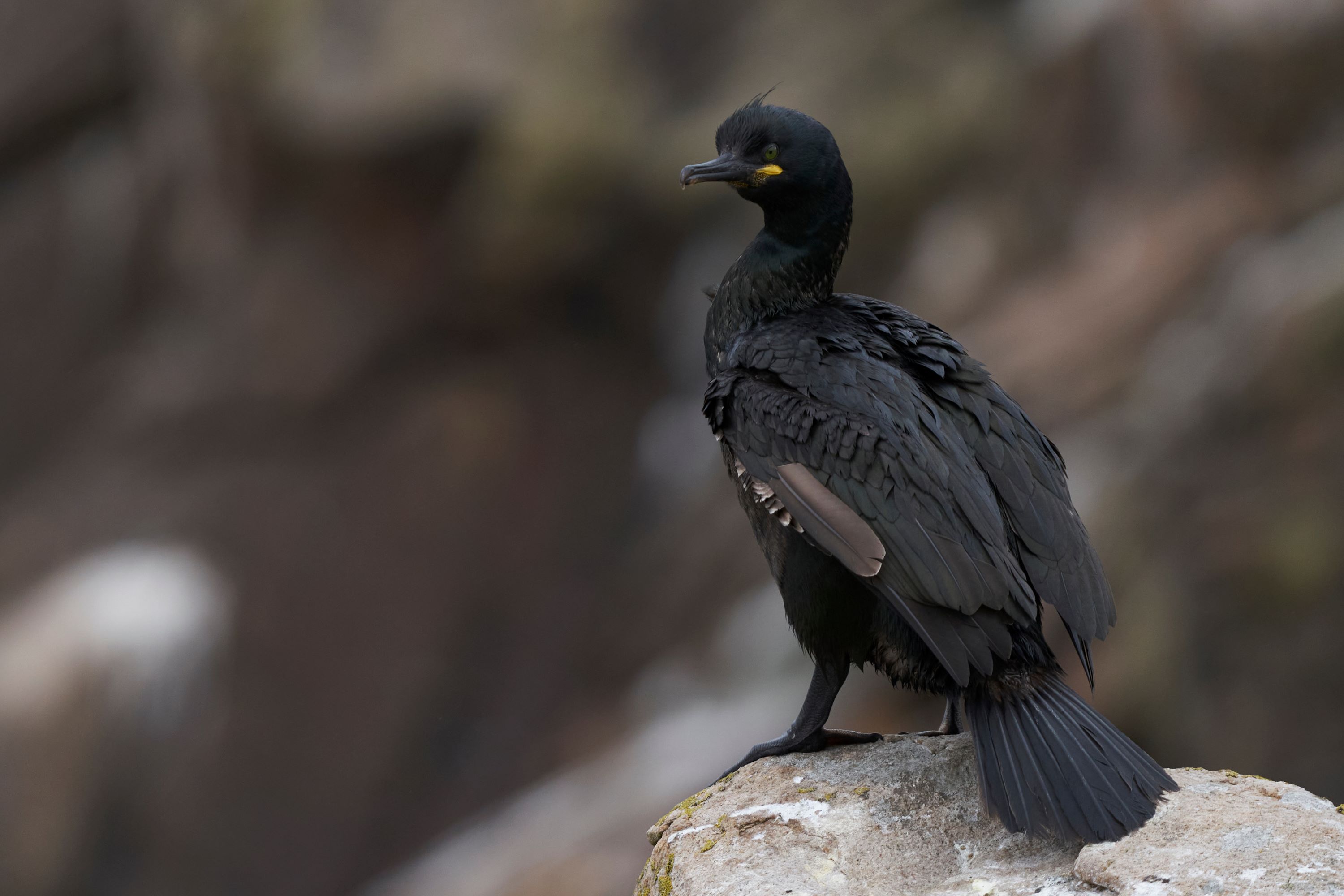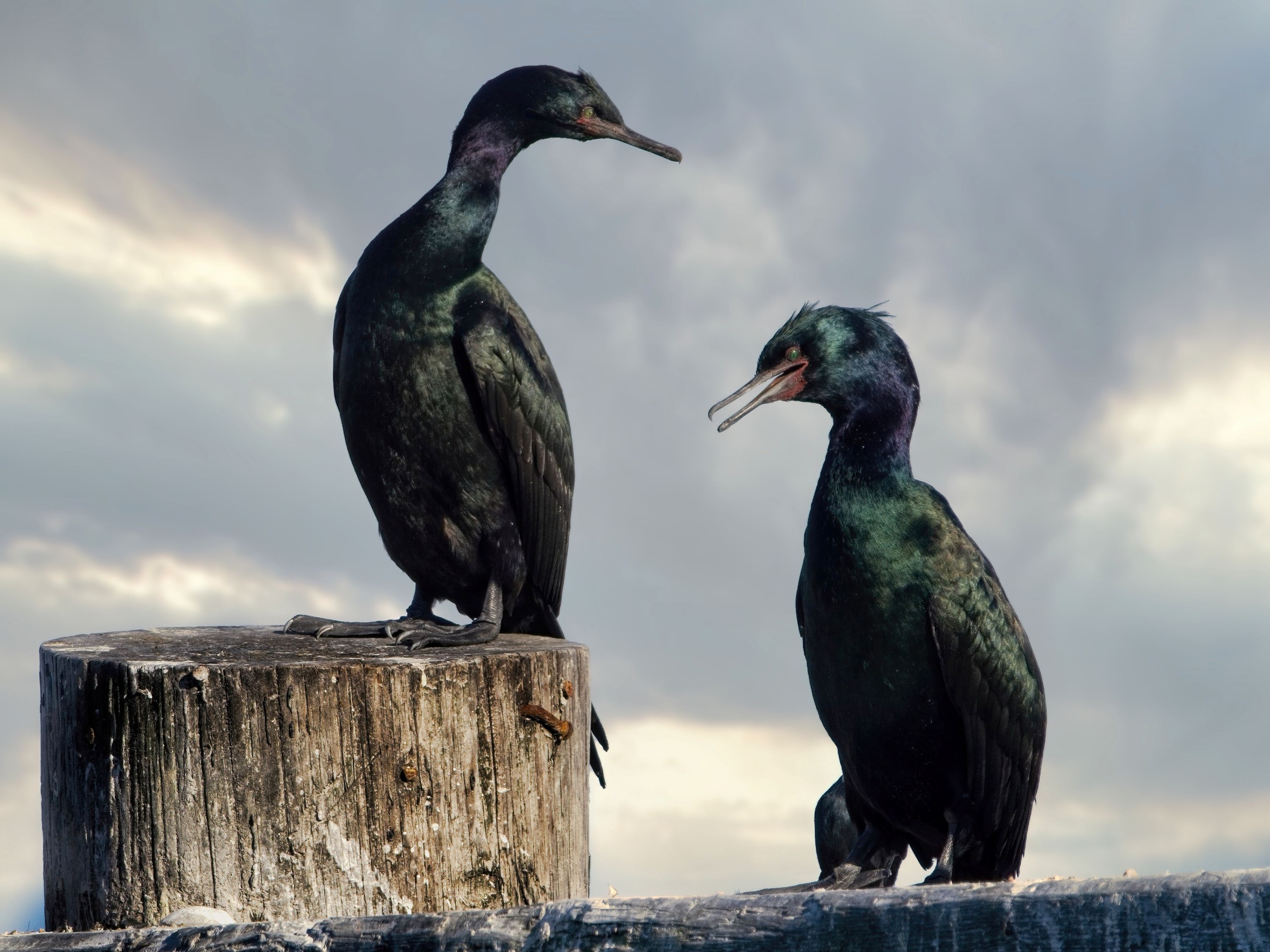
Family Phalacrocoracidae: The Diverse World of Cormorants and Shags
Introduction to the Family Phalacrocoracidae
The Family Phalacrocoracidae, commonly known as cormorants and shags, represents a group of medium to large aquatic birds, renowned for their expert swimming and diving abilities. These birds are found across the globe, inhabiting a range of aquatic environments and showcasing remarkable adaptations to their predominantly piscivorous lifestyle.
Physical Characteristics
Cormorants and shags are characterized by their long necks, robust bodies, and webbed feet. They typically exhibit dark plumage, often with a metallic sheen, and some species display patches of white or colored plumage, particularly during the breeding season. Their hooked bills are well-suited for catching fish, and their eyes are adapted for excellent underwater vision.
Habitat and Distribution
Members of the Phalacrocoracidae family are found in various habitats, including coastal regions, lakes, rivers, and estuaries. They are present in almost every part of the world, from the Arctic and temperate regions to the tropics. Some species are migratory, moving to different areas in response to changing food availability and climatic conditions.

Diet and Feeding Behavior
Cormorants and shags primarily feed on fish, supplementing their diet with other aquatic creatures like squid and crustaceans. They are adept at diving and can pursue their prey underwater with remarkable agility. After catching a fish, they usually bring it to the surface to swallow it whole.
Breeding and Nesting
The breeding behavior of Phalacrocoracidae varies among species but generally involves elaborate courtship displays, vocalizations, and physical postures. They typically nest in colonies on cliffs, islands, or trees near water. Nests are constructed from a variety of materials, including sticks, seaweed, and grass, cemented together with their droppings.
Egg Laying and Incubation
The female usually lays 3 to 4 eggs per clutch, and both parents share the duties of incubation. The incubation period varies by species but generally lasts around 3 to 4 weeks. The nests are often reused year after year, leading to significant accumulation of guano in the colony areas.

Chick Rearing and Fledging
Cormorant and shag chicks are altricial, meaning they are relatively underdeveloped at birth and require significant parental care. They are fed regurgitated food by both parents. The chicks grow rapidly and typically fledge within a few weeks to a couple of months, depending on the species.
Adaptations for Aquatic Life
Cormorants and shags have evolved several unique adaptations for their aquatic existence. Unlike many other water birds, their feathers are not completely waterproof, which reduces their buoyancy and allows them to dive more efficiently. However, this means they need to dry their wings after swimming, often seen with wings outstretched in the sun.
Conservation Status and Threats
While many species within the Phalacrocoracidae family are not currently endangered, they face various threats, including habitat loss, environmental pollution, and entanglement in fishing gear. In some regions, they are also seen as competitors for fish and are subject to control measures.
Conclusion: The Fascinating Family Phalacrocoracidae
In conclusion, the family Phalacrocoracidae, encompassing cormorants and shags, is a testament to the diversity and adaptability of aquatic birds. Their unique feeding strategies, breeding behaviors, and ecological roles underscore the richness of avian life and the importance of aquatic ecosystems. Understanding and protecting these birds are crucial for maintaining the ecological balance in their diverse habitats, from coastal waters to inland rivers and lakes.
Genus in the Family Sulidae:
- Gulosus
- Leucocarbo
- Microcarbo
- Nannopterum
- Phalacrocorax
- Poikilocarbo
- Urile